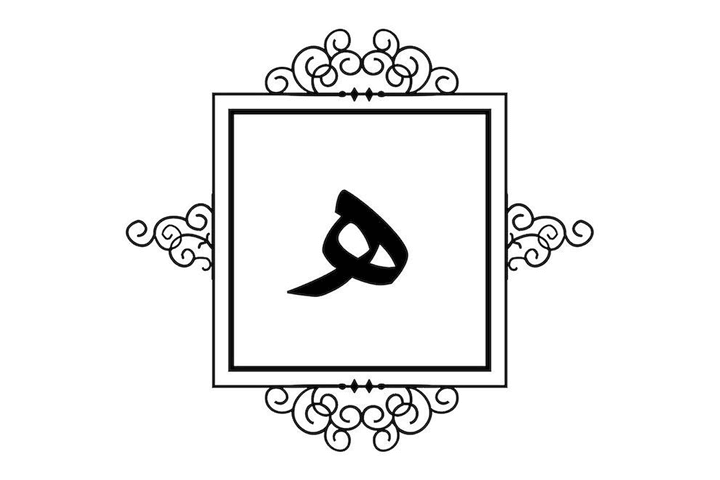Welcome, language learner! Successfully mastering the Arabic letter Hā’ (ه) marks a true milestone in your journey. It’s not just an easy-to-pronounce letter; it’s a key to unlocking many grammatical rules and everyday words.
This comprehensive guide will simplify the sound, shape, and crucial grammatical roles of the “Haa Arabic letter.” Get ready to turn this fundamental sound into one of your greatest strengths!
The Basics of Haa’ (ه): Name, Sound, and Value
The letter Hā’ (ه) is the twenty-sixth letter of the Arabic alphabet. It’s characterized by its soft, breezy sound.
| Feature | Detail |
|---|---|
| Name | Al-Hā’ (الهاء). |
| Sound | A soft, whispered, breathy sound, identical to the H in English (as in Happy or House). |
| Articulation Point (Makhraj) | It comes from the deepest part of the throat (أقصى الحلق). |
| Abjad Numerical Value | In the Abjad system (used historically and in numerology), its value is 5. |
Tip for the “h in arabic” sound: Always remember that haa’ is a “breath sound,” not a strong, frictional one. This subtle difference is vital for clear pronunciation.
The Dynamic Shapes of Haa’ (ه) in Writing
One of the most important steps for learners is recognizing that the shape of haa’ (ه) changes dramatically based on its position within a word.
| Position | Shape | Example (Meaning) | Visual Note |
|---|---|---|---|
| Initial (Beginning of the word) | هـ | هـاتِف (Hātif – Phone) | Looks like a connected loop. |
| Medial (Middle of the word) | ـهـ | نـهـر (Nahr – River) | The most unique shape; looks like a small bow tie or a figure 8. |
| Final (End of the word) | ـه | وجــه (Wajh – Face) | Resembles a small circle or the Taa’ Marbooṭa without dots. |
Haa’ in Arabic Grammar: The Pronoun and the Confusion
Mastering these two grammatical aspects will resolve the biggest challenges students face with the letter Haa’.
Haa’ al-Ḍamīr (هاء الضمير): The Third-Person Pronoun
This haa’ is attached to the end of a noun, verb, or preposition to mean the singular masculine third-person pronoun (he).
| Context | Example | Meaning |
|---|---|---|
| With a Noun (Possessive) | كتابُه | His book |
| With a Verb (Object) | رآه | He saw him |
| With a Preposition | إلــيـه | To him |
Distinguishing haa’ (ه) from taa’ Marbūṭa (ة)
The taa’ Marbūṭa (ة) is a feminine marker that looks like the final Haa’ but has two dots. This causes significant confusion.
| Feature | Tā’ Marbūṭa (ة) | Hā’ (ه) |
|---|---|---|
| Marker | Has two dots above it (pronounced T when connected). | Has no dots (pronounced H always). |
| The Stop Test | Pronounced H when you stop reading (مدرسـه). | Pronounced H always (وجـه). |
| The Golden Rule | Try adding the Damma (ُ): If it sounds like “tun,” it’s Tā’ Marbūṭa (مدرسةٌ – madrasatun). | Try adding the Damma (ُ): If it sounds like “hun,” it’s Hā’ (وجهٌ – wajhun). |
Haa’ in Context: Distinguishing Sounds and Culture
To truly master the Haa Arabic letter, we must understand its subtle differences from similar sounds and explore how it weaves into everyday language and proverbs.
Haa’ (ح) vs. haa’ (ه)
The existence of another “H” sound in Arabic often trips up learners.
- haa’ (ه): The soft H. Comes from the lower throat. (Like the regular English H).
- Ḥaa’ (ح): The hard H. Comes from the middle throat. This is a raspy, frictional sound not found in English. (Example: حـب – Ḥubb, meaning love).
Cultural Expressions with Haa’
Integrating these into your practice enriches your cultural understanding:
- “Hawwin ‘alaa Nafsak” (هوّن على نفسك): A beautiful expression meaning “Be easy on yourself” or “Don’t take things too hard.”
- Ahl al-hawaa (أهل الهوى): Literally “People of hawaa (desire/passion),” often referring to lovers or people driven by emotion.
Conclusion
You have now successfully mastered the essentials of the letter haa’ (ه), from its pronunciation as the soft “h in arabic” to its challenging grammatical use in haa’ al-Ḍamir. The key to true fluency is consistent, guided practice.
Ready to put this knowledge to the test and master all five Arabic language skills? Kaleela offers structured, interactive courses developed by native experts, covering both Modern Standard Arabic and essential dialects. Stop guessing and start speaking!
Download the Kaleela app today and make the final leap toward confident Arabic communication.



